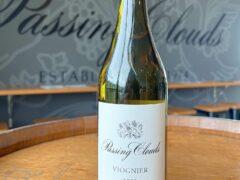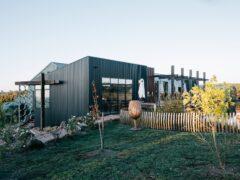The story begins in 1973 when Graeme Leith and Sue Mackinnon, great friends and partners, decided that they wanted even more challenges in life than were possible for them in their careers as an electrical contractor and a journalist. they wanted to brave the elements, face the challenges of the land, and like so many before them pursue the holy grail of ‘the best wine in the world’.
The wine
They chose a site in a dry area north west of Bendigo on old gold diggings, where the soil had been dug over a hundred and twenty years before by goldminers. There they planted their vines, initially Shiraz and Cabernet Sauvignon, to make a classic Aussie blend.
They were successful, and the first wine they showed at the Melbourne Wine Show, the 1982 Shiraz Cabernet won Gold (it is a wine that is still drinking well to this day). Since then they have won additional acclaim for their straight Shiraz, Cabernet Sauvignon and Pinot Noirs. As one wine writer said:
“I have a lot of sample bottles on my table at the end of the day, but whenever there’s Passing Clouds, it’s the one we drink with dinner”.
Working on the principle that enthusiasm triumphs over professionalism, the first vines were planted at Kingower by Sue Mackinnon, Graeme Leith, Anne and David Brown (who then wisely took up cheese making) in November 1973 by the headlights of the van in which they had driven from Melbourne after work. They laid out the wires, measured the distance between the vines, dug the holes with shovels and planted 150 vines, Cabernet, Shiraz and Riesling that Tom Lazar had left over from his last plantings at Virgin Hills, and which he had kindly donated. They then had some supper and drove the 200kms back to Melbourne. They were younger, then.
1974 saw a more structured approach but as it didn’t stop raining the vines were all planted in mud in scenes reminiscent of rice paddies in the East. Of course when the rain stopped there was a drought, and the vines, 7,000 or so by then, had to be watered one at a time out of a Furphy tank. That took a while.
Sue and Graeme were convinced that things grown organically would be better for you, so when the weeds grew Graeme chipped them out with a hand chipping tool, or three; they tended to wear out on the pieces of quartz the miners had left behind.
In 1975 the rest of the vineyard having had its gum trees, box thorn, chinese scrub and tree of heaven removed, was planted to Shiraz and Cabernet to fulfill the aim of a 60% Shiraz 40% Cabernet blend. That year was assisted by the use of a ‘silly plough’ designed to be pulled by a horse. It consisted of a blade attached to a pair of handles that were then attached to an idiot who would try to weave in and out between the vines, turning over the grass at its root zone. The amazing thing is that it worked tolerably well attached to the faithful Ferguson tractor, although the lack of communication between the tractor driver Sue, and the idiot Graeme, led to occasional altercations.
Graeme first became acquainted with wine, as did so many other Melbournians, with the odd bottle of Rutherglen red purchased from Jimmy Watson’s in Lygon Street Carlton. However, Graeme really became fascinated by the product of the grape in Perugia, in 1960, where he was attending the University for Foreigners doing a three month course in Italian language.
Every Thursday evening he and his friends would eat at a little trattoria, the food was good and the wine was sublime; but one night the wine was very ordinary.
“Where’s the good wine?”
they asked, to be told that the barrel had run out, this wine was from the vineyard next door. How could they be so different?
A short trip on the Lambretta established that it was so: neighbouring vineyards, one producing good wine, and one bad.
The question was why? And so the first seed was sown, and the first step of a journey into the alchemy of wine; turning bunches of grapes into that magical, constantly changing and always fascinating beverage, wine.






